Abstract
It has been demonstrated that cobra venom factor prepared by the usual combination of ion exchange chromatography and sephadex gel filtration is contaminated by substantial amounts of a 'heavy' phospholipase A. The two activities may be separated by isoelectric focusing. Cobra venom factor focuses at pH between 5-75 and 6-75 whereas the phospholipase is all found at pH below 7-75. In certain test systems, particularly in vitro, and particularly where albumin concentrations are low, the contaminating phospholipase may produce effects that have been attributed to complement activation.
Full text
PDF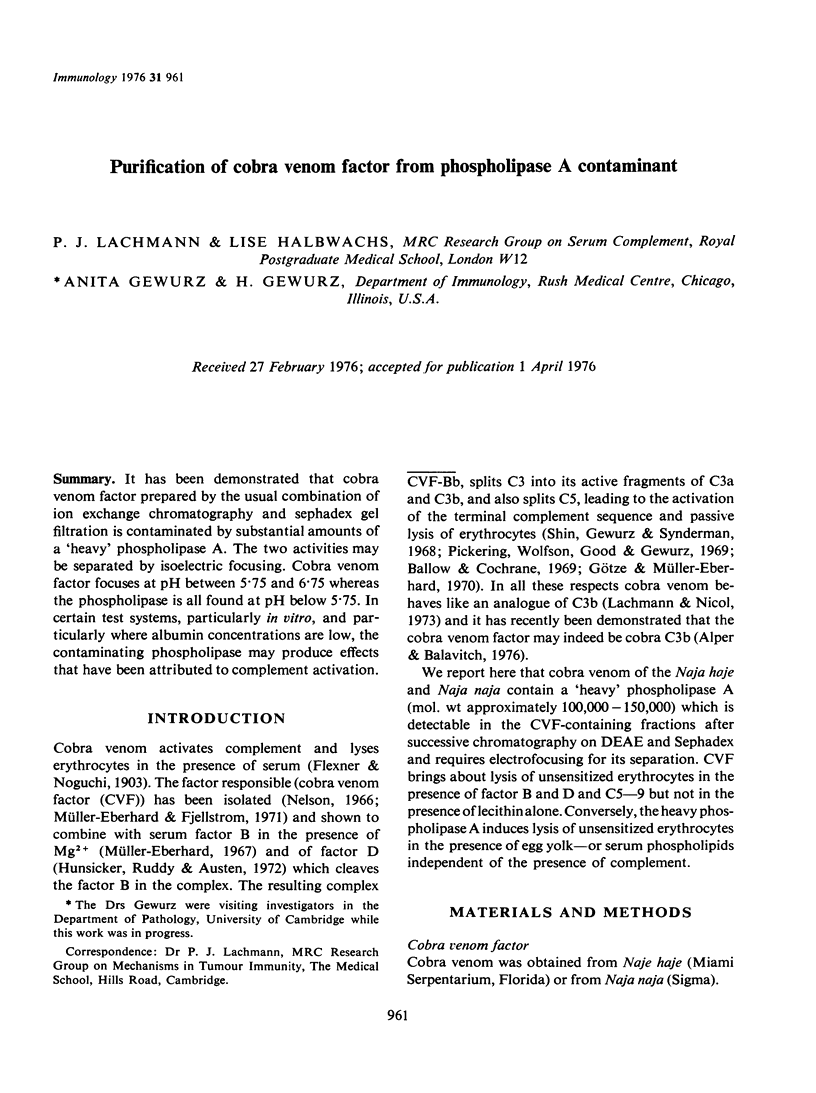
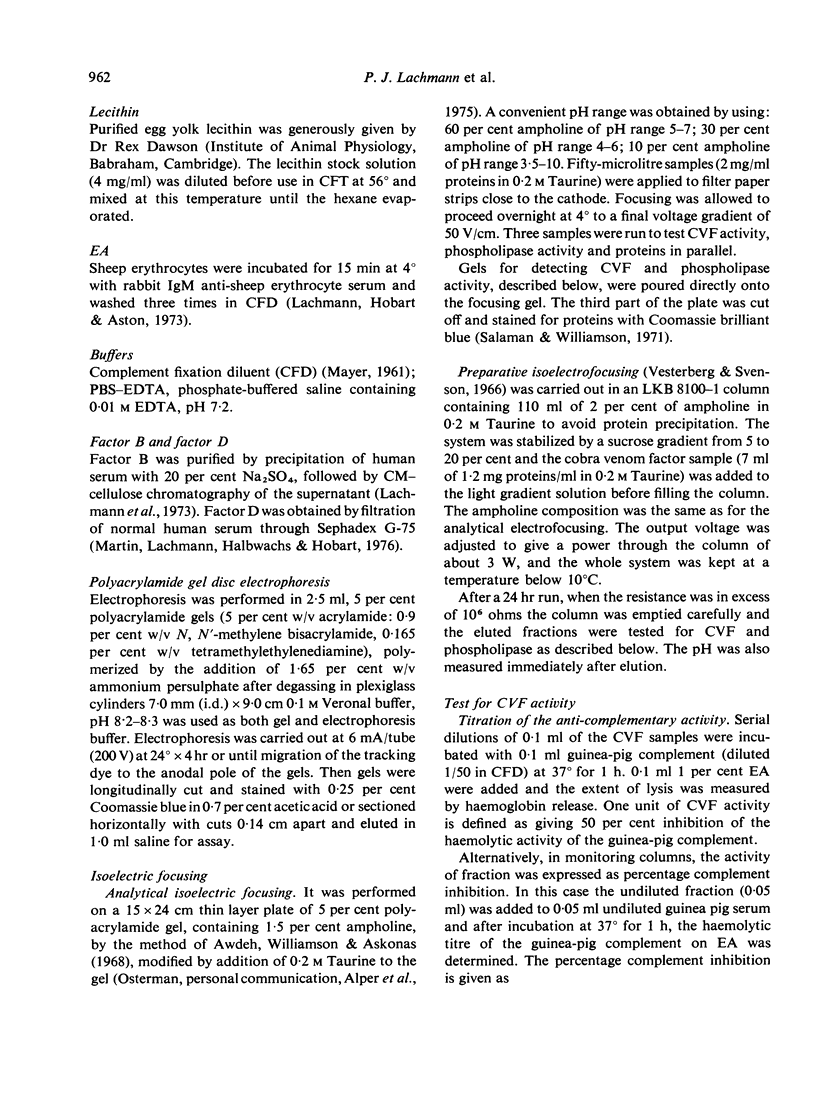
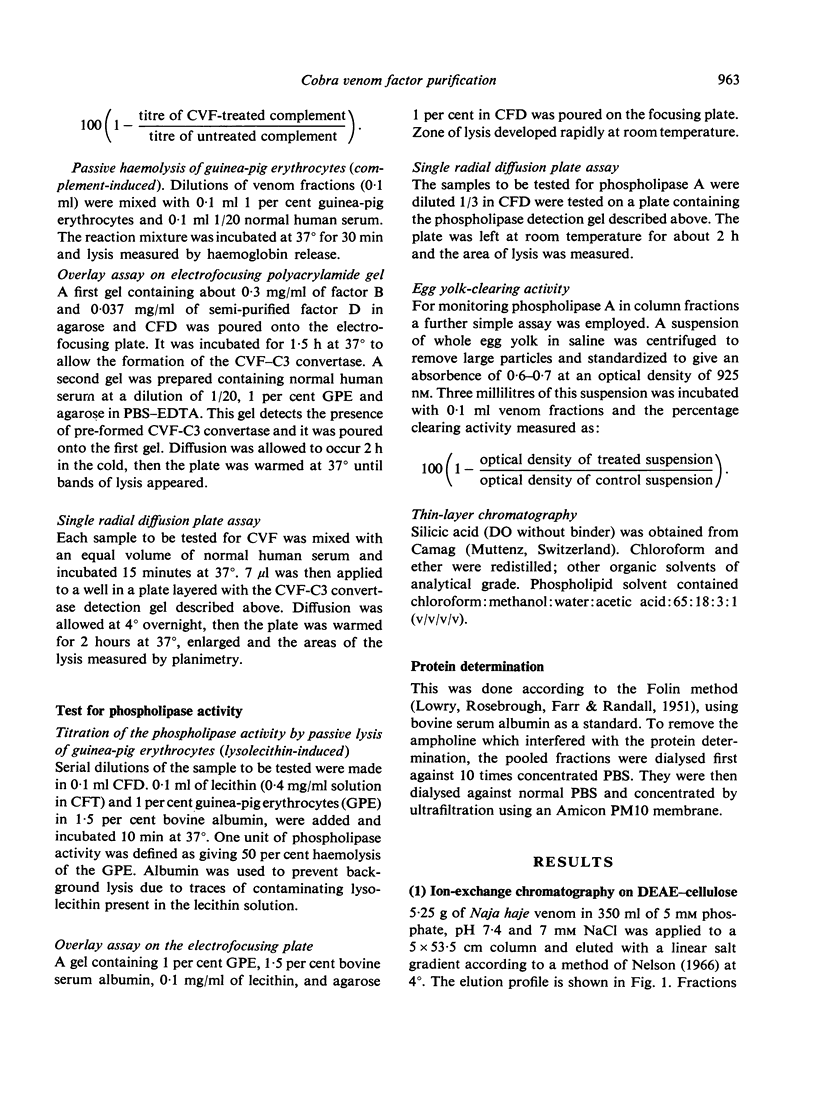
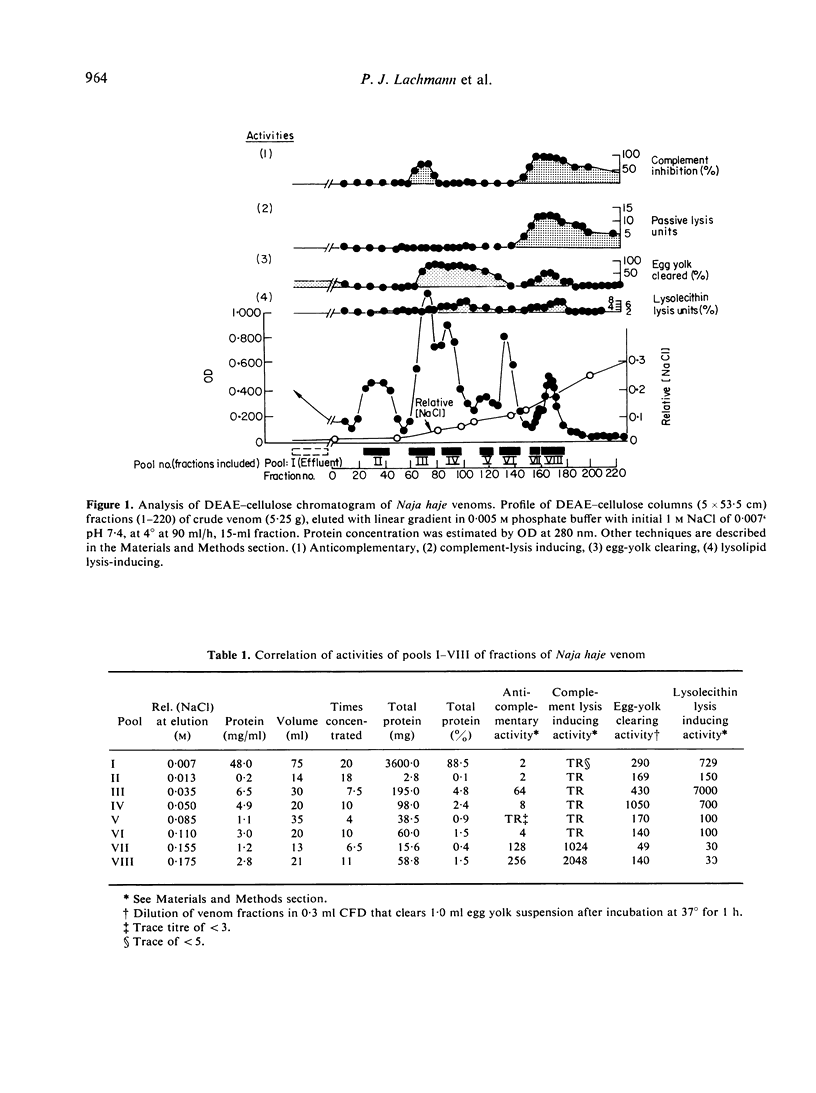
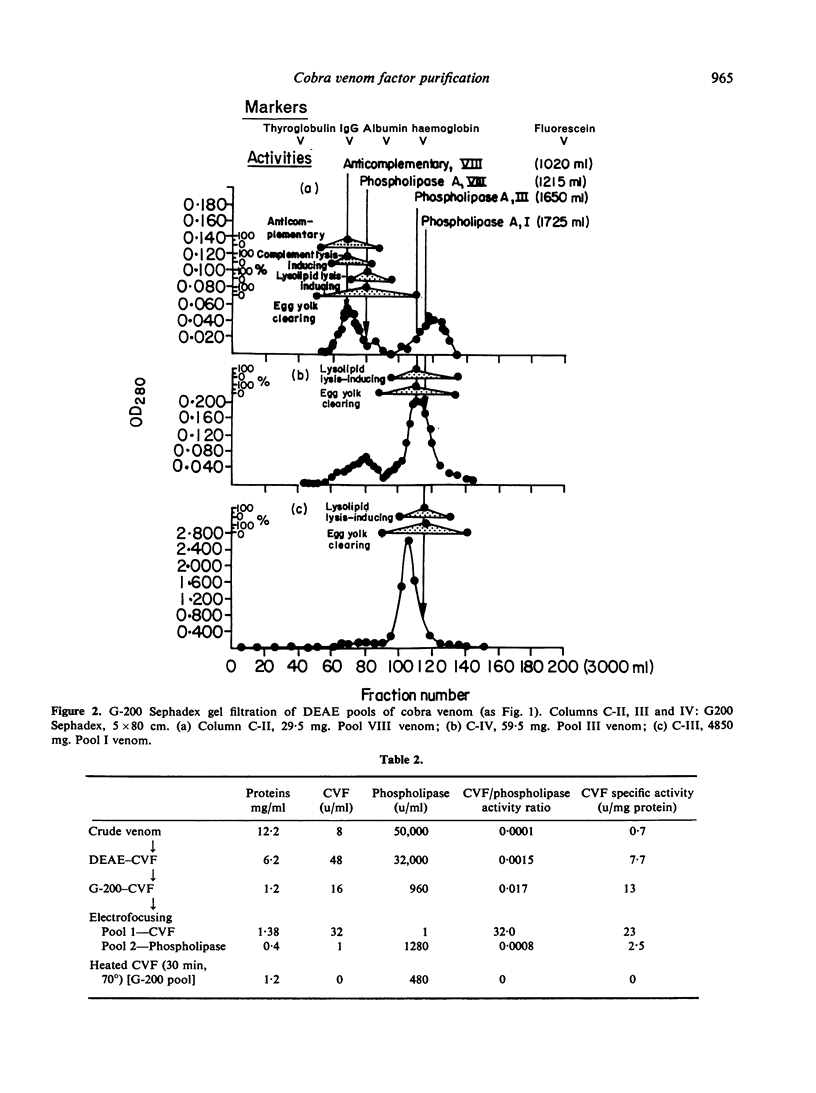
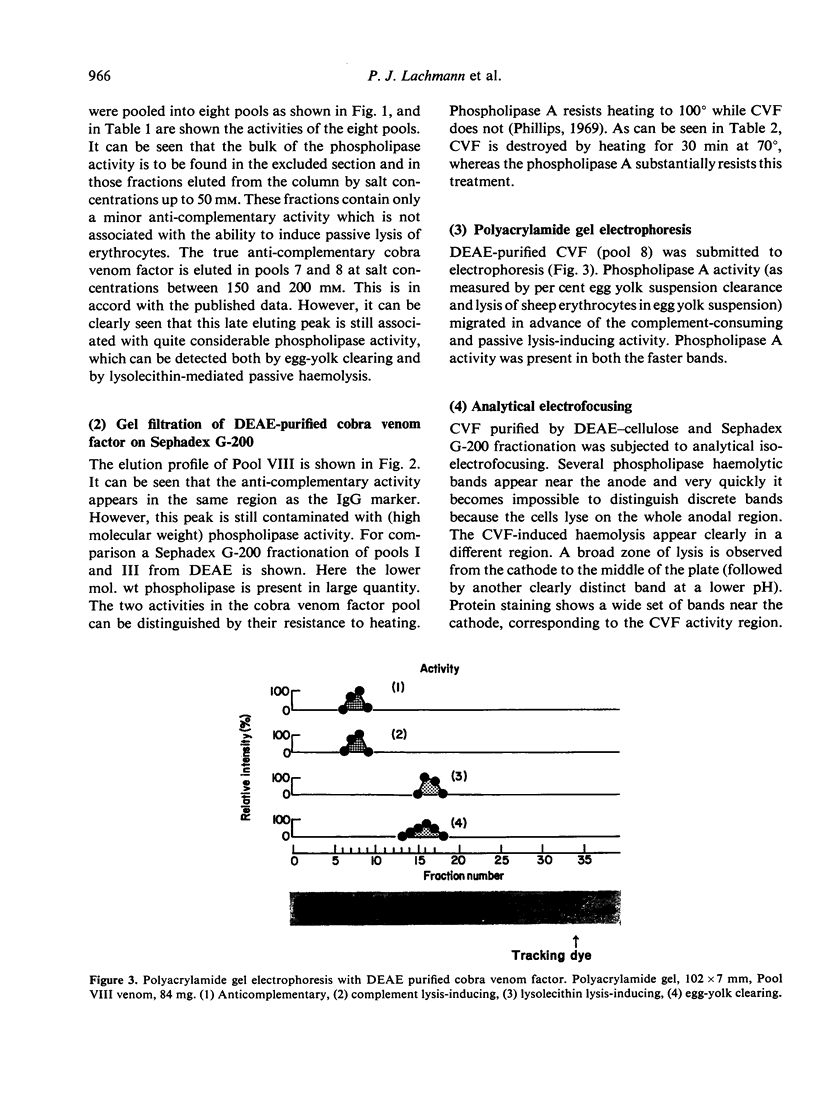
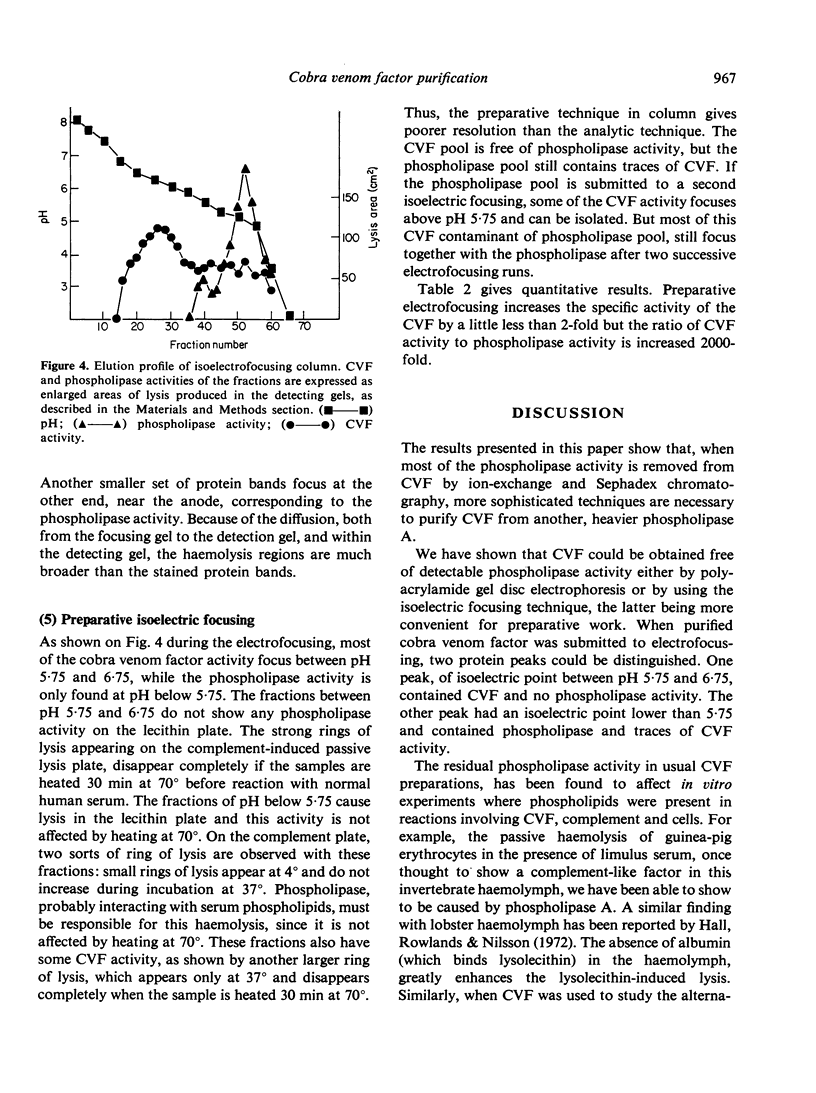
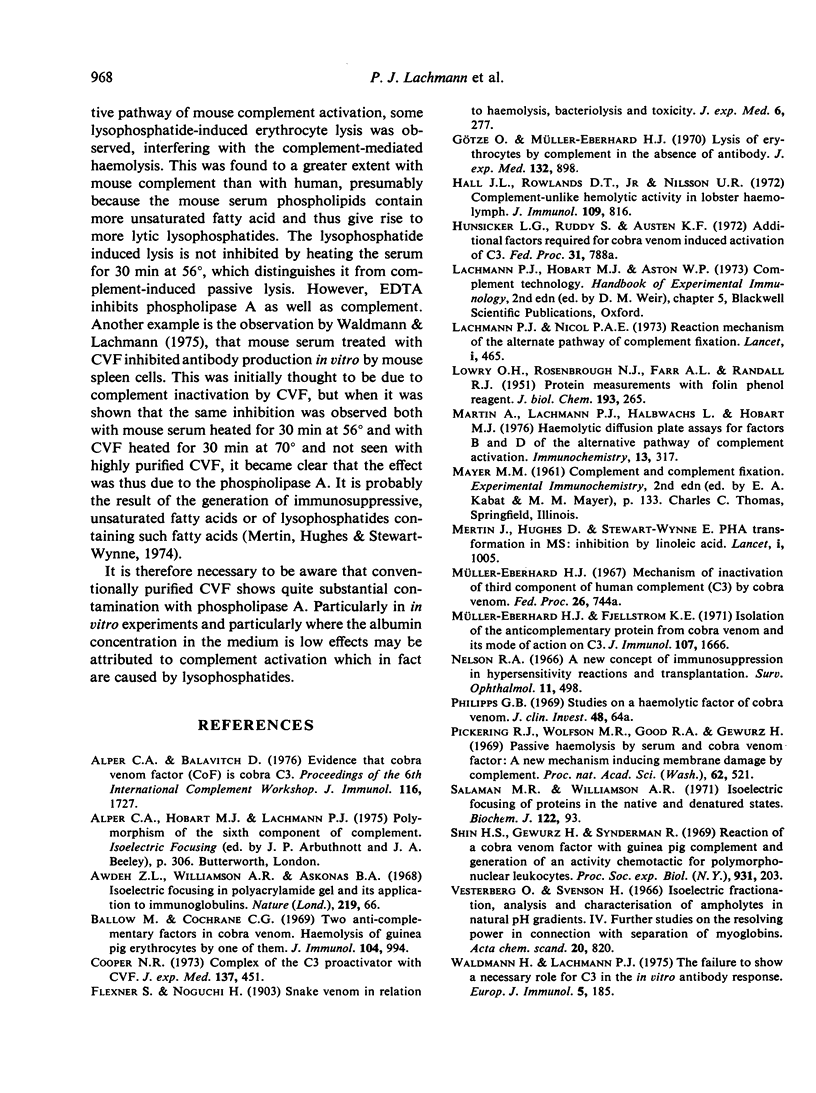
Images in this article
Selected References
These references are in PubMed. This may not be the complete list of references from this article.
- Cooper N. R. Formation and function of a complex of the C3 proactivator with a protein from cobra venom. J Exp Med. 1973 Feb 1;137(2):451–460. doi: 10.1084/jem.137.2.451. [DOI] [PMC free article] [PubMed] [Google Scholar]
- Götze O., Müller-Eberhard H. J. Lysis of erythrocytes by complement in the absence of antibody. J Exp Med. 1970 Nov;132(5):898–915. doi: 10.1084/jem.132.5.898. [DOI] [PMC free article] [PubMed] [Google Scholar]
- Hall J. L., Rowlands D. T., Jr, Nilsson U. R. Complement-unlike hemolytic activity in lobster hemolymph. J Immunol. 1972 Oct;109(4):816–823. [PubMed] [Google Scholar]
- LOWRY O. H., ROSEBROUGH N. J., FARR A. L., RANDALL R. J. Protein measurement with the Folin phenol reagent. J Biol Chem. 1951 Nov;193(1):265–275. [PubMed] [Google Scholar]
- Lachmann P. J., Nicol P. Reaction mechanism of the alternative pathway of complement fixation. Lancet. 1973 Mar 3;1(7801):465–467. doi: 10.1016/s0140-6736(73)91886-2. [DOI] [PubMed] [Google Scholar]
- Martin A., Lachmann P. J., Halbwachs L., Hobart M. J. Haemolytic diffusion plate assays for factors B and D of the alternative pathway of complement activation. Immunochemistry. 1976 Apr;13(4):317–324. doi: 10.1016/0019-2791(76)90341-4. [DOI] [PubMed] [Google Scholar]
- Müller-Eberhard H. J., Fjellström K. E. Isolation of the anticomplementary protein from cobra venom and its mode of action on C3. J Immunol. 1971 Dec;107(6):1666–1672. [PubMed] [Google Scholar]
- Nelson R. A., Jr A new concept of immunosuppression in hypersensitivity reactions and in transplantation immunity. Surv Ophthalmol. 1966 Aug;11(4):498–505. [PubMed] [Google Scholar]
- Pickering R. J., Wolfson M. R., Good R. A., Gewurz H. Passive hemolysis by serum and cobra venom factor: a new mechanism inducing membrane damage by complement. Proc Natl Acad Sci U S A. 1969 Feb;62(2):521–527. doi: 10.1073/pnas.62.2.521. [DOI] [PMC free article] [PubMed] [Google Scholar]
- Salaman M. R., Williamson A. R. Isoelectric focusing of proteins in the native and denatured states. Anomalous behaviour of plasma albumin. Biochem J. 1971 Mar;122(1):93–99. doi: 10.1042/bj1220093. [DOI] [PMC free article] [PubMed] [Google Scholar]
- Shin H. S., Gewurz H., Snyderman R. Reaction of a cobra venom factor with guinea pig complement and generation of an activity chemotactic for polymorphonuclear leukocytes. Proc Soc Exp Biol Med. 1969 May;131(1):203–207. doi: 10.3181/00379727-131-33840. [DOI] [PubMed] [Google Scholar]
- Vesterberg O., Svensson H. Isoelectric fractionation, analysis, and characterization of ampholytes in natural pH gradients. IV. Further studies on the resolving power in connection with separation of myoglobins. Acta Chem Scand. 1966;20(3):820–834. doi: 10.3891/acta.chem.scand.20-0820. [DOI] [PubMed] [Google Scholar]
- Waldmann H., Lachmann P. J. The failure to show a necessary role for C3 in the in vitro antibody response. Eur J Immunol. 1975 Mar;5(3):185–193. doi: 10.1002/eji.1830050307. [DOI] [PubMed] [Google Scholar]



